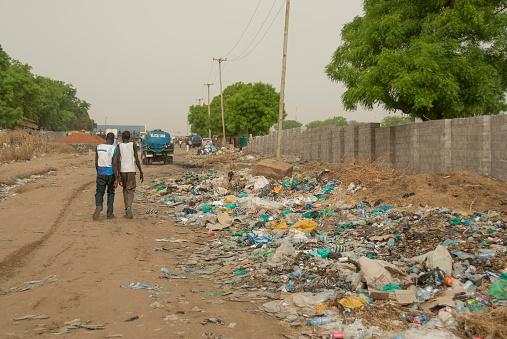Africa-Press – South-Sudan. The streets are becoming filthy with garbage, open manholes and dotted places with horrible smelling corpses of dogs. Along the sites of Gudele, Munuki, Jebel market and Custom Park, heaps of garbage were dumped on the roads and were not removed for many weeks now. In the absence of bins, the residents dump the garbage on the streets. This increasingly contribute to the overcrowding of garbage everywhere on the streets of Juba. With these shameful sights of garbage across the streets of juba, the garbage reflects country’s status to foreigners who visits juba for business purpose or diplomatic missions. In addition, it invites many diseases such as environmental pollution and prevalence of cholera. Many environmentalists and juba city council spearheaded the campaign with slogan of “keep Juba clean.” But nothing is done to make it clean and green.
However, garbage in Juba city is removed by conservancy workers of Juba city councils in a week after it gets piled up. Juba city council is an entrusted institution with waste collection duties. It has developed its own by-laws to govern the operation of waste in the city.It has been one revised to suit the current environmental hazardous threatening the life of the population living in juba city. Moreover, juba city council does not collect garbage at fixed time and fixed place, and it is not clear whether they have shortage of waste collection vehicles or all the trucks got broken. Juba’s 2021 population is now estimated at 421,292. In 1950, the population of Juba was 6,249. Juba has grown by 18,077since 2015, which represents a 4.48% annual change. These population estimates and projections come from the latest revision of the UN WORLD Urbanization prospects.
According to data collection survey on solid waste management in juba, the final report from 2012 to 2014 pointed out that “the project for capacity development on solid waste management in juba.” Which is a technical cooperation project by the government of Japan was implemented in Juba. Before the project was implemented, the public cleansing service was no specific organization to implement the service. Also, a landfill site had not been developed and there was only a dumping site less than 1.0 ha. As such, through the technical cooperation project, about 10 people concerned with waste management were gathered from the ministry of environment, Juba city council, each payam of Juba city, Juba county government that manages the landfill site and Rejaf payam to organize the “Juba Solid waste management group,” which started a waste collection service project in the largest market and part of the residential area in Juba in July 2012. The waste collection service gradually took root and fee collection from large-scale waste generators also began. Also, since the capacity of the existing landfill site became insufficient for accepting the collected waste, an area of 25 ha was newly acquired to develop a controlled landfill site, which was put into operation. Fees were also collected at the landfill site from the vehicles bringing in waste cover the operating cost. The report also conclude that,in the “ solid waste management plan” developed through the technical cooperation project declares a target that it will achieve the collection rate of 34% in 2023 and as such, the city is planning to strengthen the capacity of solid waste management by taking such measures as additional procurement of equipment. However, in actuality, due to the lack of budget and rapid population increase in the city, the plan is not making progress as scheduled.
For More News And Analysis About South-Sudan Follow Africa-Press






